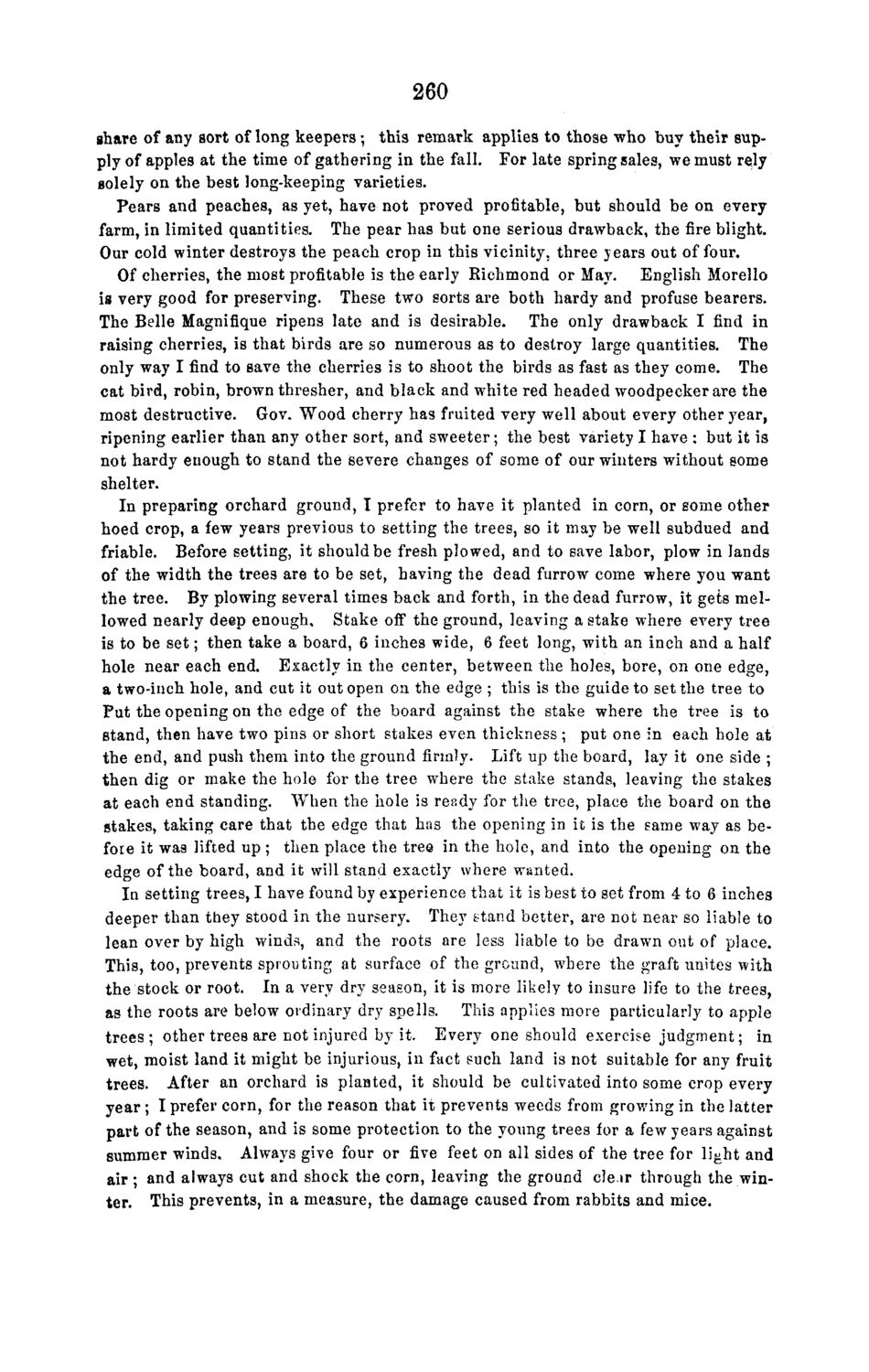| |
| |
Caption: Board of Trustees Minutes - 1868
This is a reduced-resolution page image for fast online browsing.

EXTRACTED TEXT FROM PAGE:
260 share of any sort of long keepers; this remark applies to those who buy their supply of apples at the time of gathering in the fall. For late spring sales, we must rely solely on the best long-keeping varieties. Pears and peaches, as yet, have not proved profitable, but should be on every farm, in limited quantities. The pear has but one serious drawback, the fire blight. Our cold winter destroys the peach crop in this vicinity, three years out of four. Of cherries, the most profitable is the early Richmond or May. English Morello is very good for preserving. These two sorts are both hardy and profuse bearers. The Belle Magnifique ripens late and is desirable. The only drawback I find in raising cherries, is that birds are so numerous as to destroy large quantities. The only way I find to save the cherries is to shoot the birds as fast as they come. The cat bird, robin, brown thresher, and black and white red headed woodpecker are the most destructive. Gov. Wood cherry has fruited very well about every other year, ripening earlier than any other sort, and sweeter; the best variety I have : but it is not hardy euough to stand the severe changes of some of our winters without some shelter. In preparing orchard ground, I prefer to have it planted in corn, or some other hoed crop, a few years previous to setting the trees, so it may be well subdued and friable. Before setting, it should be fresh plowed, and to save labor, plow in lands of the width the trees are to be set, having the dead furrow come where you want the tree. By plowing several times back and forth, in the dead furrow, it gets mellowed nearly deep enough. Stake off the ground, leaving a stake where every tree is to be set; then take a board, 6 inches wide, 6 feet long, with an inch and a half hole near each end. Exactly in the center, between the holes, bore, on one edge, a two-inch hole, and cut it out open on the edge ; this is the guide to set the tree to Put the opening on the edge of the board against the stake where the tree is to stand, then have two pins or short stakes even thickness ; put one in each hole at the end, and push them into the ground firmly. Lift up the board, lay it one side ; then dig or make the hole for the tree where the stake stands, leaving the stakes at each end standing. When the hole is ready for the tree, place the board on the stakes, taking care that the edge that has the opening in it is the same way as before it was lifted up ; then place the tree in the hole, and into the opening on the edge of the board, and it will stand exactly where wanted. In setting trees, I have found by experience that it is best to set from 4 to 6 inches deeper than they stood in the nursery. They stand better, are not near so liable to lean over by high winds, and the roots are less liable to be drawn out of place. This, too, prevents sprouting at surface of the ground, where the graft unites with the stock or root. In a very dry season, it is more likely to insure life to the trees, as the roots are below ordinary dry spells. This applies more particularly to apple trees; other trees are not injured by it. Every one should exercise judgment; in wet, moist land it might be injurious, in fact such land is not suitable for any fruit trees. After an orchard is planted, it should be cultivated into some crop every year ; I prefer corn, for the reason that it prevents weeds from growing in the latter part of the season, and is some protection to the young trees for a few years against summer winds. Always give four or five feet on all sides of the tree for light and air ; and always cut and shock the corn, leaving the ground cle.ir through the winter. This prevents, in a measure, the damage caused from rabbits and mice.
| |